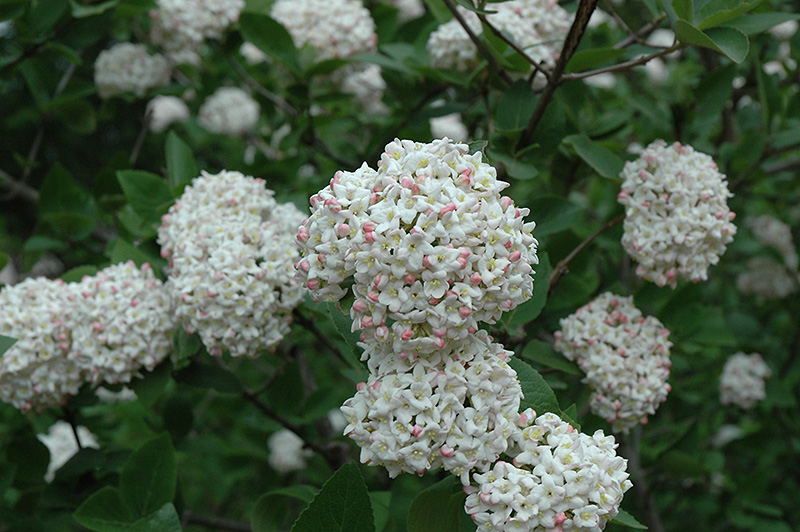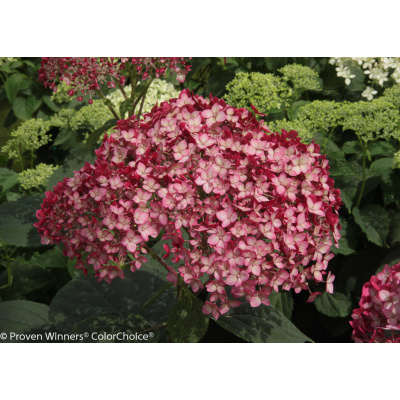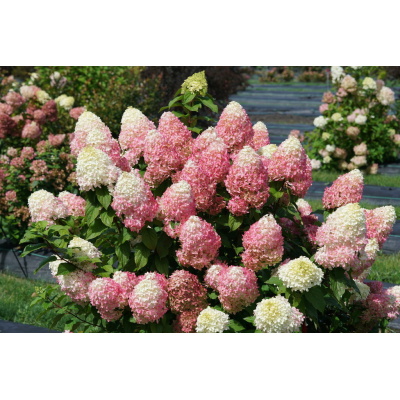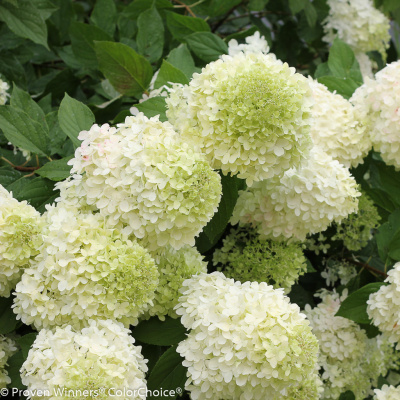Description
 Viburnum × juddii
Viburnum × juddii
Viburnum × juddii, commonly called Judd viburnum, is a semi-snowball hybrid propagated by William H. Judd who introduced it at the Arnold Arboretum in 1920. It is a cross between V. carlesii x V. bitchiuense. A rounded deciduous shrub, it typically matures to 6-8’ tall and 6-10’ wide. It is noted for its fragrant white flowers in spring, quality dark green foliage, black fruit in fall and purple fall color. Sweetly fragrant white flowers in hemispherical clusters (cymes to 3.5” wide) bloom in spring. Ovate to ovate-oblong or elliptic, dark green leaves (to 2.5” long) turn burgundy purple to red in fall. Flowers are followed by berry-like drupes which ripen from red to black from late summer to early fall. Judd viburnum is similar to V. carlesii, but generally is considered to be somewhat denser, more spreading and more floriferous with shorter leaves.
Common Name: Judd viburnum
Type: Deciduous shrub
Family: Adoxaceae
Native Range: Garden origin
Zone: 4 to 8
Height: 6.00 to 8.00 feet
Spread: 6.00 to 10.00 feet
Bloom Time: April
Bloom Description: White
Sun: Full sun to part shade
Water: Medium
Maintenance: Low
Suggested Use: Hedge
Flower: Showy, Fragrant
Leaf: Good Fall
Attracts: Butterflies
Fruit: Showy
Tolerate: Drought




Reviews
There are no reviews yet.